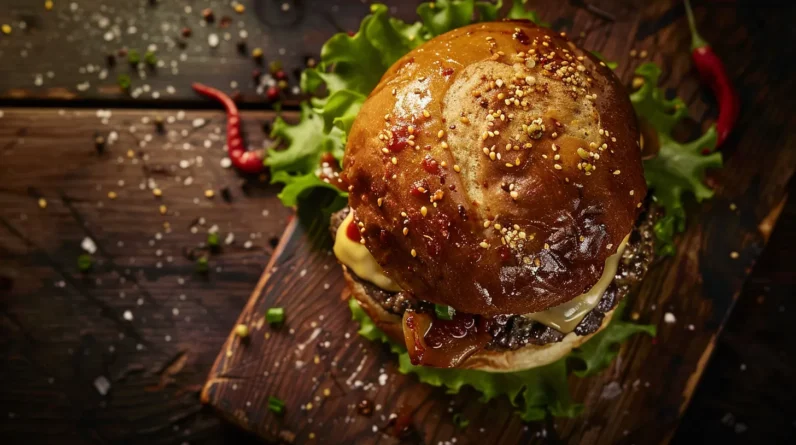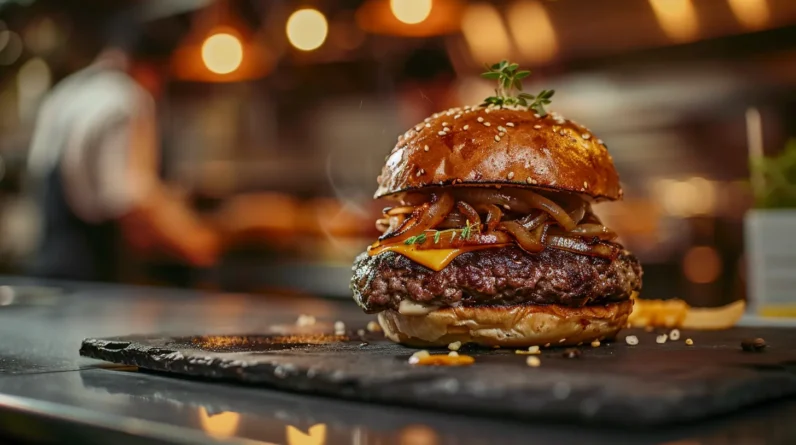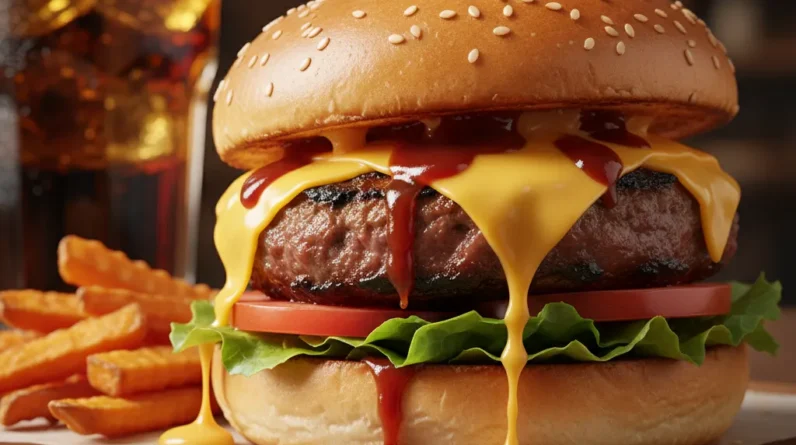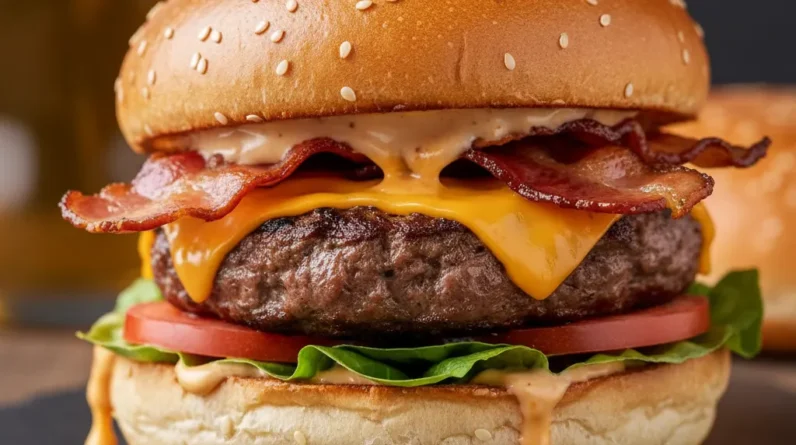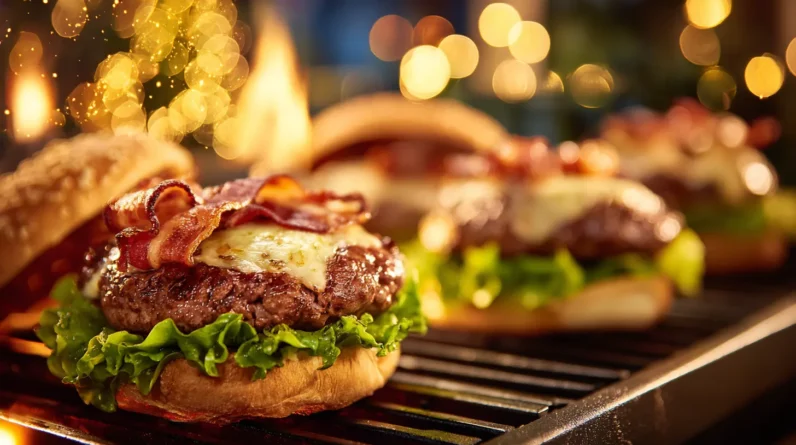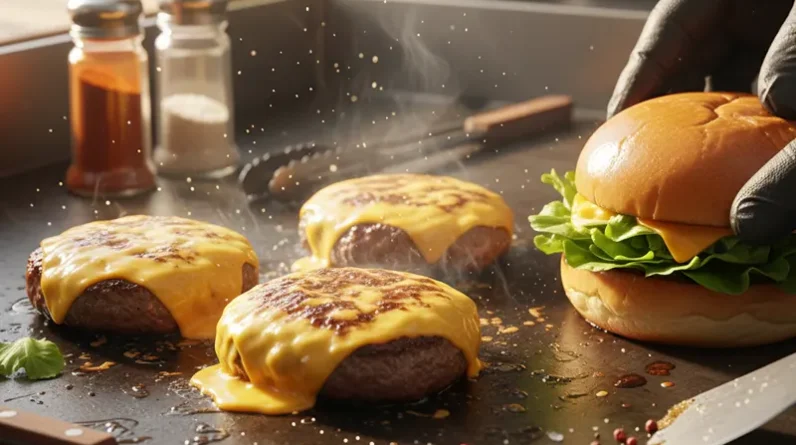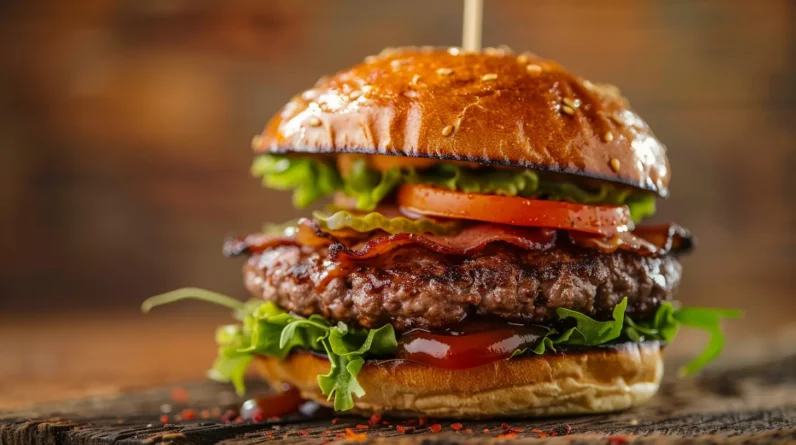
We’re building a beef burger that’s as resilient as it is flavorful. We select meats with ideal fat content, typically 15% to 20%, and grind them to achieve a balance of coarse and fine textures. Mastering patty formation and handling techniques is vital. By getting these elements right, we guarantee our burger stays intact – and we’re just getting started on what makes it truly great.
Meat Selection and Composition
As we explore into meat selection and composition, we find that the ideal fat content ratio is essential for crafting a great burger, and we’re aiming for a fat content of 15% to 20%. Meat blends are pivotal, as they allow us to balance fat content and flavor. Combining cuts like brisket and round achieves a perfect ratio. Fat content greatly impacts the patty’s juiciness and structural integrity. We consider ground chuck’s 20% fat content ideal. By adjusting meat blends, we can customize fat content, ensuring our burger is both flavorful and cohesive. This balance is key to a great burger.
Grinding and Patty Formation
We’re moving on to grinding and patty formation, a crucial step where we directly impact the burger’s texture and structural integrity. We use grind techniques to achieve the desired texture, balancing coarse and fine grinds for tenderness and cohesion. During patty formation, we apply precise techniques, such as using a patty press or ring mold, to guarantee uniform thickness and shape. This step requires careful handling to prevent protein breakdown and fat smearing, which can lead to a dense or falling-apart patty. By mastering grind techniques and patty formation, we can create burgers that are both juicy and structurally sound.
Patty Handling and Storage
Since proper handling and storage techniques are crucial for maintaining the quality and safety of our beef patties, we’ll focus on implementing best practices. We use storage methods like refrigeration and freezing.
| Method | Temperature |
|---|---|
| Refrigeration | 40°F (4°C) |
| Freezing | 0°F (-18°C) |
| Patty consolidation | prevents freezer burn |
| Storage duration | up to 4 months |
We prioritize patty consolidation to prevent freezer burn, ensuring our beef burgers remain fresh and intact. By following these guidelines, we master patty handling and storage.
Bun Preparation and Structural Integrity
Bun preparation is essential for creating a structurally sound base for our beef burgers. We achieve this through proper dough hydration, which enables gluten development. By using the autolyse technique, we mix flour and water, letting it rest before kneading. This process improves dough elasticity and structure. We knead until the dough passes the window-pane test, indicating sufficient gluten development for structural integrity. Proper dough hydration and gluten development are critical, as they directly impact the bun’s texture and ability to hold toppings. We aim for a smooth, elastic dough that’s slightly tacky, but not sticky, to guarantee proper handling and final texture.
Cooking Techniques for Flavor and Stability
Now that our buns have the necessary structural integrity, it’s time to focus on cooking techniques that bring out the best flavor and stability in our beef burgers. We use specific cooking methods and temperature control to achieve this.
| Cooking Methods | Temperature Control |
|---|---|
| Searing | High heat |
| Grilling | Medium-high heat |
| Pan-frying | Medium heat |
We preheat our grill or pan to guarantee proper searing and crust formation, targeting an internal temperature of 160°F for safety and flavor.
Assembly Considerations for Flavor and Structural Cohesion
As we shift to the assembly phase, we must consider the intricate relationships between component layers to guarantee our beef burger’s flavor and structural cohesion. We focus on burger assembly and topping management to prevent slippage. By placing condiments and toppings strategically, we maintain flavor balance and stability. Distributing weight evenly and balancing textures is vital. We position slippery vegetables beneath the patty and use cheese as an adhesive layer to hold toppings in place. This approach guarantees a harmonious union of flavors and textures, resulting in a robust and delicious burger that doesn’t fall apart. Proper assembly is key.
Conclusion
We’ve crafted a burger that’s a million times stronger than the average patty, with techniques that guarantee it won’t fall apart – literally and flavor-wise. By perfecting meat selection, grinding, handling, and cooking, we’ve achieved a flavor and structural cohesion that’s virtually unbreakable, a true masterpiece of culinary engineering.


